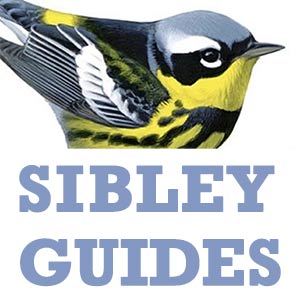Several people have asked me why I didn’t include scientific names of subspecies in the guide. The reasons are explained below.
A list of regional subspecies names used in the Guide and their matching scientific names can be found here.
I made the decision to use only regional and common names for subspecific variation after a great deal of thought and research, and I still feel that for the vast majority of readers the scientific names would only be confusing. I found that when I started using regional descriptors for different populations it actually increased my own understanding of the variation (I had been confused by the scientific names for years!), and it gave me the freedom to describe actual geographic variation without being constrained by published subspecies names. Some may think this approach is a bit cavalier, but the truth is that geographic variation is understudied in most species, subspecies have been named very inconsistently, and there are many subspecies in need of careful revision.
Furthermore, I think it is unwise for inexperienced field observers to attempt the identification of subspecies. It is better to label birds as typical of the populations from a certain region, since applying a scientific name implies a precision that is simply not possible in the field under most circumstances.
Anyone interested in more of the technical details of subspecies names can consult Peter Pyle’s 1997 Identification Guide to North American Birds (and the excellent list of references therein), the American Ornithologist’s Union’s 1957 Checklist, and older classic works such as Bent and Ridgway.
This is not intended to be a list of “identifiable forms” of North American birds, nor is it a complete listing of subspecies. The subspecies illustrated in the field guide were chosen for various reasons. Some are distinctive populations that may be elevated to full species status, or at least are consistently identifiable in the field without considering geographic location; some represent the extremes of clinal variations and were chosen simply to show the range of appearance possible in a species; some represent very minor variations illustrated because they can be confused with similar species; and some are shown simply because there was room for an illustration and because I think any variation is noteworthy.
For example the variation in Common and Ruddy Ground-Doves, which is subtle and not very well-defined, is illustrated because it complicates the separation of those two species. On the other hand the variation in Mourning Dove, which is about as significant as that of the ground-doves, is not illustrated because it creates no identification problems.
I have taken this hodge-podge of subspecies and variations and arbitrarily chosen to illustrate some and to divide them into regional groups because that was the only way to simplify the content of the book. There are hundreds of other subspecies that are probably “identifiable” in the field by an observer with enough experience and confidence.
Please feel free to offer comments and suggestions.


Hello, Mr. Sibley. My brother was able to attend an event in Pittsburgh and I was the lucky recipient of a signed second ed. Eastern Birds guide. I thanked him and now I thank you! As to the subspecies matter:
I started birding this year and really enjoy it. eBird has become my default website and I contribute to it as much as I have time. In doing so, I try to not only be as accurate as possible but also as precise as I can be. In order to submit the most thorough information, I like to include subspecies data whenever possible. As you probably know, this provides the Cornell Lab of Ornithology with more detailed information [selecting Red-tailed hawk (abieticola) versus just Red-tailed hawk]. Though I am a beginning birder, having the subspecies listed in the book in addition to the regional names would help me to this. I don’t feel this would encourage new birders to misidentify birds more than they (we) already do, rather it would help us learn the differences and up-to-date subspecies of populations. If you’re considering a third edition in the near future, I’d greatly like to see these included.
Best,
Gavin Anderson
Minnesota